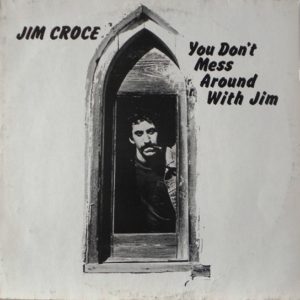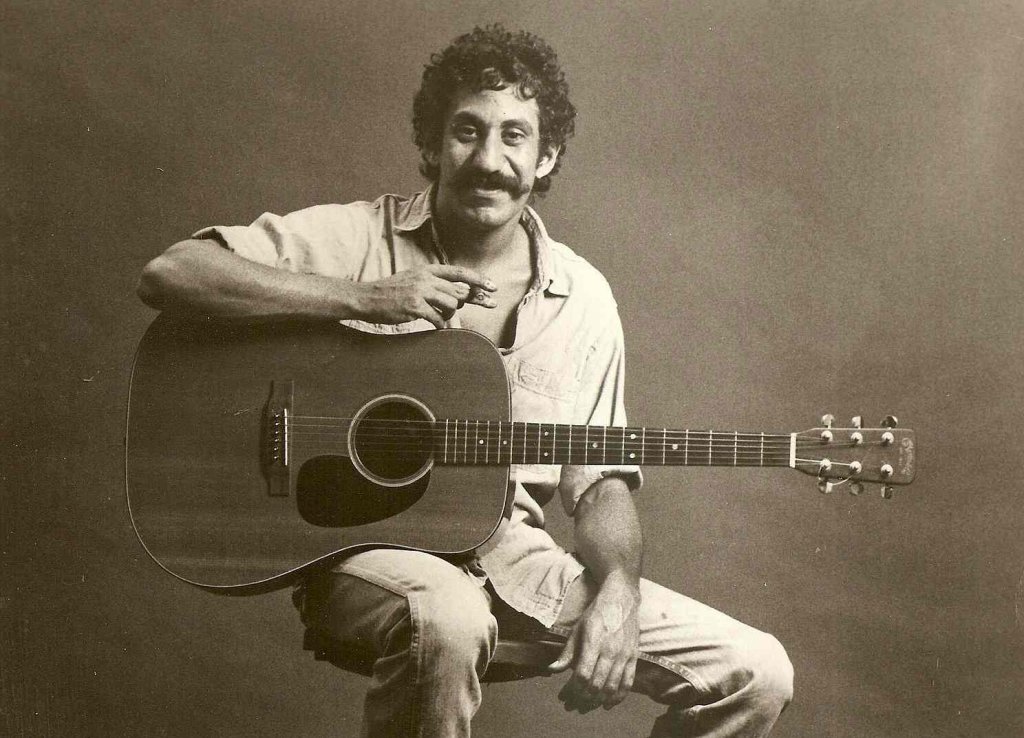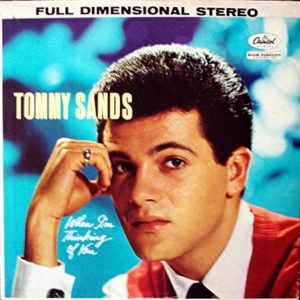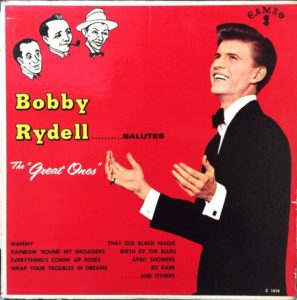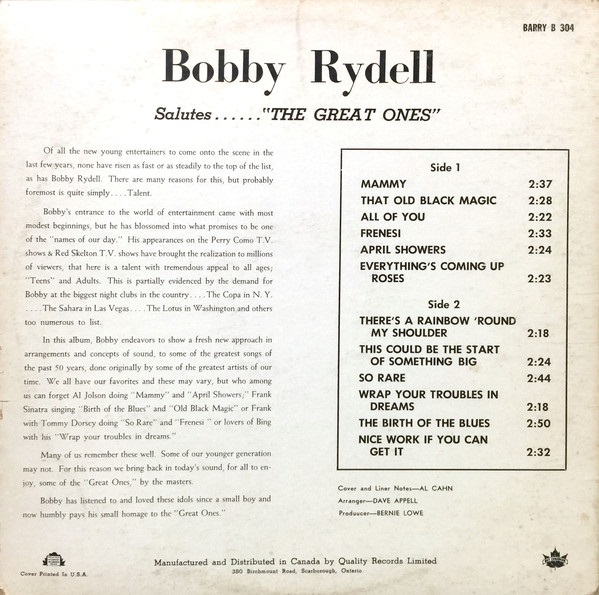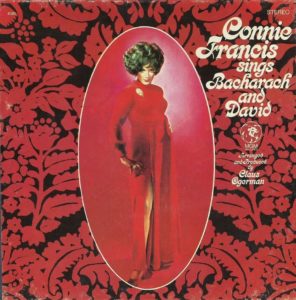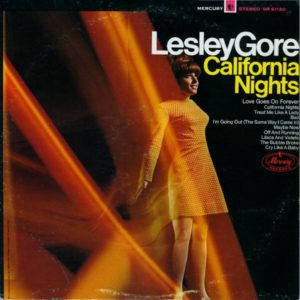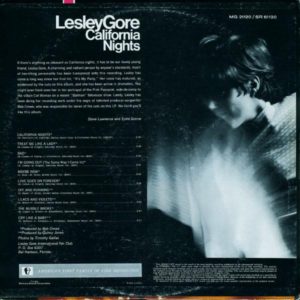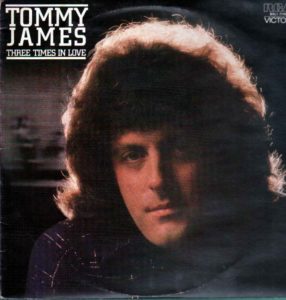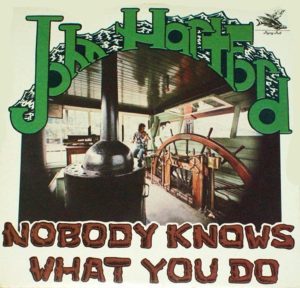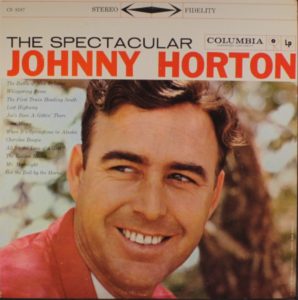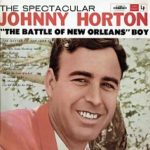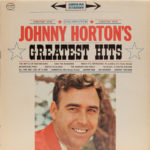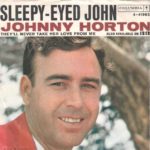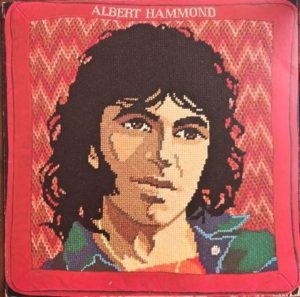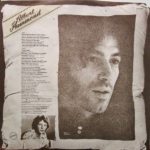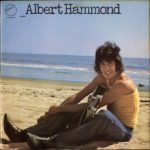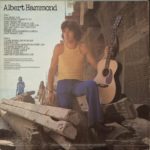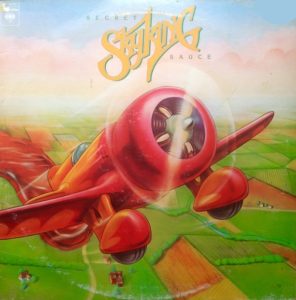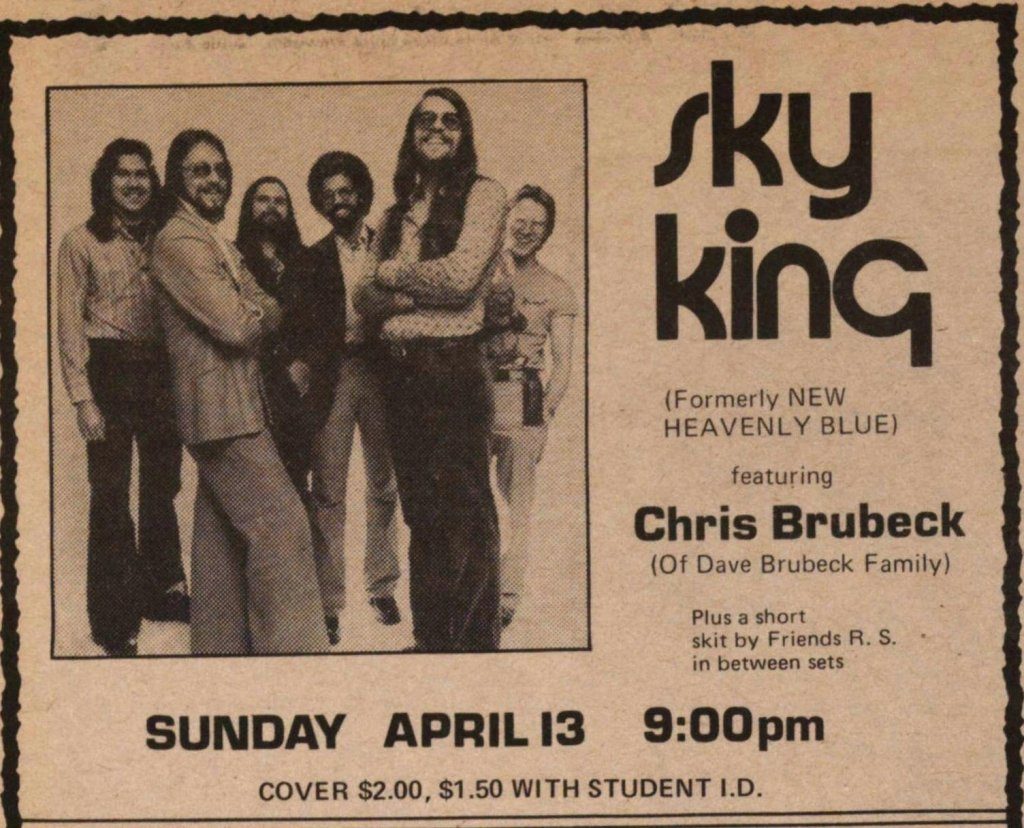Jim was musically schizophrenic – he had two personas. The wounded folkie and the bragging street wise thumper.
They aren’t at odds with each other, they are just flipsides of the same person.
No one is one is ever note.
Do you ever trust a musician who is one note? (sic)
I don’t know what Jim was like as a person but as a songwriter and singer of his own songs he is wholly convincing as the sensitive guy with moments of good natured braggadocio.
Biography, James Joseph Croce was born in working class South Philadelphia, Pennsylvania, on January 10, 1943 to Italian Americans James Albert Croce and Flora Mary (Babucci) Croce. He played accordion (naturally enough) and learnt to play the guitar.
Wikipedia, “… Croce grew up in Upper Darby, Pennsylvania just outside of Philadelphia and attended Upper Darby High School. Graduating in 1960, he studied at Malvern Preparatory School for a year before enrolling at Villanova University, where he majored in psychology and minored in German. He graduated with a bachelor's degree in 1965. Croce was a member of the Villanova Singers and the Villanova Spires. When the Spires performed off-campus or made recordings, they were known as The Coventry Lads. Croce was also a student disc jockey at WKVU (which has since become WXVU) … Croce did not take music seriously until he studied at Villanova, where he formed bands and performed at fraternity parties, coffee houses, and universities around Philadelphia, playing "anything that the people wanted to hear: blues, rock, a cappella, railroad music … anything." Croce's band was chosen for a foreign exchange tour of Africa, the Middle East, and Yugoslavia. He later said, "We just ate what the people ate, lived in the woods, and played our songs. Of course they didn't speak English over there but if you mean what you're singing, people understand." On November 29, 1963, Croce met his future wife Ingrid Jacobson at the Philadelphia Convention Hall during a hootenanny, where he was judging a contest”. https://en.wikipedia.org/wiki/Jim_Croce
Allmusic, “It wasn't until his freshman year of college that he began to take music seriously, forming several bands over the next few years. After graduation, he continued to play various gigs at local bars and parties, working as both a teacher and construction worker to support himself and his wife, Ingrid. In 1969, the Croces and an old friend from college, Tommy West, moved to New York and record an album. When the Jim and Ingrid record failed to sell, they moved to a farm in Lyndell, Pennsylvania, where Jim juggled several jobs, including singing for radio commercials. Eventually he was noticed and signed by the ABC/Dunhill label and released his second album, You Don't Mess Around with Jim, in 1972. The record spawned three hits: "You Don't Mess Around With Jim," "Operator (That's Not the Way It Feels)," and "Time in a Bottle," the latter ultimately shooting all the way to number one on the Billboard charts. Croce quickly followed with Life and Times in early 1973 and gained his first number one hit with "Bad, Bad Leroy Brown." … After four years of gruelling tour schedules, Croce grew homesick. Wishing to spend more time with Ingrid and his infant son Adrian James, he planned to take a break after the Life and Times tour was completed. Tragically, the tour would never finish; just two months after "Bad, Bad Leroy Brown" topped the charts, Croce's plane crashed in Natchitoches, Louisiana. Croce and the four other passengers (including bandmember Maury Muehleisen) were killed instantly… Croce's career peaked after his death. In December of 1973, the album I Got a Name surfaced, but it was "Time in a Bottle," from 1972's You Don't Mess Around with Jim, that would become his second number one single. Shortly afterwards, "I'll Have to Say I Love You in a Song" reached the Top Ten. Several albums were released posthumously, most notably the greatest hits collection Photographs & Memories, which became a best-seller”. https://www.allmusic.com/artist/jim-croce-mn0000848034/biography
It’s hard to see where Croce’s career would have gone and whether he could have sustained his success.
This music was released at the height of the singer-songwriter craze and he had been honing his skills on the road for 10 years. Tastes change.
He, perhaps, would have gone the way of Paul Simon and international sounds but we have what we have.
And, what we have is glorious.
The beauty lies in the musicality and honestly in songs dealing with ordinary people.
“Ordinary people”, a much used and abused couple of words …
These are not ordinary people from Oxford University, Manhattan’s Upper East Side or Art College but they are regular blue collar people in regular jobs.
And, Jim knew these ordinary people.
He may have gone to university but his background was with these people and then he worked as a construction worker after graduation, drove a truck, survived a diesel accident, and then worked temporarily as a school teacher of a Junior High school in South Philadelphia.
I mean we are talking about South Philadelphia.
For ten years he struggled as a musician in-between these regular jobs.
He knows the people he is singing about.
Much like Ray Davies (of the Kinks), Croce’s heroes are people he identifies with. Ordinary people who haven’t gone into music.
“A lot of singers claim to write about “real life,” and maybe a lot of them do. But Jim wrote about everyday life, as beautiful or ugly or mundane as it ever is. Like the night he got caught speeding in a car that… well, his license had expired, his registration was for a different vehicle, and the car itself was so run down that a junkyard would have looked twice at it. The cop could have thrown the book at him, and then thrown the bookshelf as well. Instead he let him go because he’d just met the ultimate “Hard Time Losin’ Man.””
http://jimcroce.com/?page_id=773#sthash.LMdyDZK9.dpbs
"You Don't Mess Around with Jim" was Jim first proper album though his third album. His first, the obscure "Facets" (1966) was self-published. The second, Jim & Ingrid Croce" (1969) was a duet album with his wife Ingrid, whom he toured with between 1964 and 1971.
There is anger here but the songs aren’t angry, there is observation but the observation isn’t impartial, there is pain because it exists, there is humour here because life has to be laughed at or with sometimes.
Importantly he has invested his ordinary people tales with a musicality that is more than good enough for an Oxford student, a resident of posh NYC or an artiste.
I think, his musical attitude partially comes from his Italian-American child of migrant background. Italian American entertainers (generally) were more emotionally visceral than intellectual. Jim Croce recognises this and then ups the contemplative elements. This makes the songs work on both levels.
They become both universal and specific and wholly endearing.
Produced by Terry Cashman and Tommy West (Jim's friend from The Villanova Spires) both who have their feet in pop rock sound which gives this album a distinct bounce, crispness and a break from folkie and solemn singer songwriter traditions.
Half the songs here are classics being sung by buskers and pub soloists (at least they were, here in Australia) …don't hold that against him.
All songs written by Jim Croce.
Tracks (best in italics)
Side One
- You Don't Mess Around with Jim – One of the greatest of all singer-songwriter songs and very atypical. It may not be fashionable to say so, or even wise, but I think this is a seminal song of the 70s. It certainly was influential. https://en.wikipedia.org/wiki/You_Don%27t_Mess_Around_with_Jim_(song)
- Tomorrow's Gonna Be a Brighter Day – Positive and less boisterous though still in brag persona. There is no real apology (there is a lip service one) for past misdeeds but the narrator is sure that what's ahead for tomorrow for him and his partner. Perhaps partly biographical, but then most of the songs probably are.
- New York's Not My Home – The wounded heart. NYC is a bitch. For every song written about the place there must be another about shattered dreams, faded hopes, or leaving the place. The sweet strings dissipate a powerful song but it still shines through.
- Hard Time Losin' Man – In his brag persona though the "hard time losin man" has nothing to brag about. His ship doesn't come in, he buys a dud car, he gets shafted on a drug buy … funny.
- Photographs and Memories – a beautiful song about of an old love. One of the greatest of all singer-songwriter love songs.
- Walkin' Back to Georgia – walkin' back to a state of Georgia? Not quite, walking back to a girl called Georgia is the obvious narrative but imagery of the road, and walk home allows for a reading of walking back to a girl in Georgia, or Georgia itself. Whatever it is it is quite wonderful.
Side Two
- Operator (That's Not the Way It Feels) – Lost love and life. Should the narrator ring his old girlfriend who is now living with his (ex) best friend? He makes a decision not to. In this age, where we don't have operator assisted calls and mobiles / cell phones (and social media), I'm sure the result would have been different. This is another of the great singer-songwriter songs. https://en.wikipedia.org/wiki/Operator_(That%27s_Not_the_Way_It_Feels)
- Time in a Bottle – Yet another great singer-songwriter tune song. This is a pure love song, one of the purest. Given the subject of eternal love It has to have some sentimentality about it but the narrator is making a conscious decision to be with this person , as seen in the third verse ("I've looked around enough to know, That you're the only one I want to go, Through time with") https://en.wikipedia.org/wiki/Time_in_a_Bottle
- Rapid Roy (The Stock Car Boy) – another brag with a big nod to Chuck Berry. A hoot.
- Box #10 – a song about a struggling musician from Southern Illinois in NYC taken by a "Broadway flower", mugged and wanting to go home. He rings his parents to get the fare home.
- A Long Time Ago – remembering a new love. Haunting lyrics.
- Hey Tomorrow – Another promise to a woman that she is the one and the past is in the past. Again, quite wonderful lyrically, though not as catchy as the classics.
And …
I’ve got compilations by Jim Croce and, not surprisingly most of the songs here are on them. This is a great singer-songwriter album, perhaps the best … I'm keeping it.
Chart Action
US
Singles
1972 You Don't Mess Around with Jim #8
1972 Operator (That's Not the Way It Feels) #17
Album
1972 #1 Pop
England
Nothing.
Sounds
You Don't Mess Around with Jim
live
https://www.youtube.com/watch?v=nv4xarqtjhA
New York's Not My Home
live
https://www.youtube.com/watch?v=G95f4tLGuzc
Operator (That's Not the Way It Feels)
live
https://www.youtube.com/watch?v=rw01trwmul0
mp3 attached
Time in a Bottle
https://www.youtube.com/watch?v=QTfwbtVVtAY
Rapid Roy (The Stock Car Boy)
https://www.youtube.com/watch?v=4BNwA4WfXHQ
Others
https://www.youtube.com/watch?v=u-LBSUwLO4Q
whole concert
https://www.youtube.com/watch?v=MAxIP2IJDgk
Review
https://en.wikipedia.org/wiki/You_Don%27t_Mess_Around_with_Jim
Bio
http://jimcroce.com/?page_id=773#sthash.LMdyDZK9.dpbs
https://www.youtube.com/watch?v=n__wnKLehH4
Website
Trivia
- “Croce released his first album, Facets, in 1966, with 500 copies pressed. The album had been financed with a $500 ($3,777 in 2017 dollars) wedding gift from Croce's parents, who set a condition that the money must be spent to make an album. They hoped that he would give up music after the album failed, and use his college education to pursue a "respectable" profession.[9] However, the album proved a success, with every copy sold”. https://en.wikipedia.org/wiki/Jim_Croce
- His widow, Ingrid, retired from music in 1971 to raise their son (singer-songwriter A. J. Croce). She owns and operates Croce's, a very popular restaurant/bar in San Diego, California and keeps his memory alive. http://croces.com/
- Quote, [on his roots] "I never really thought of my neighborhood in South Philly as being a neighborhood, it was more a state of mind. For people who aren't familiar with those kinds of places, it's a whole different thing. Like 42nd Street in New York City is a state of mind". https://www.imdb.com/name/nm0188321/bio

